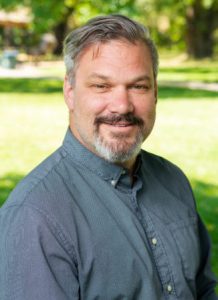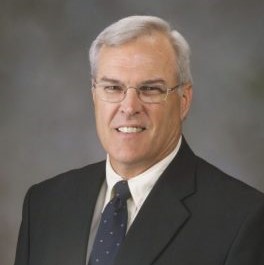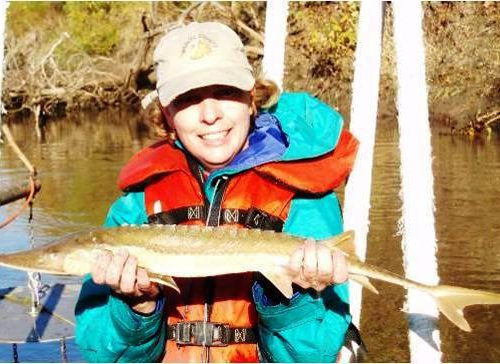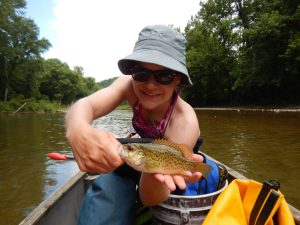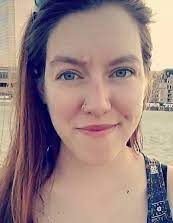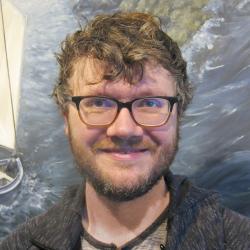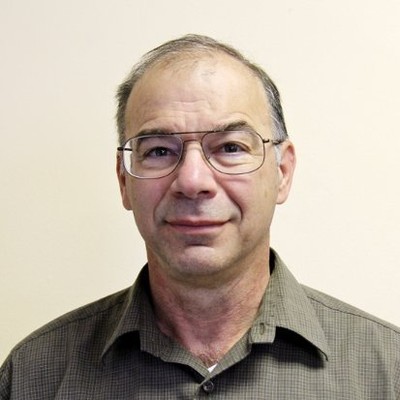As of October 4, 2021
The courses below are currently scheduled as live, in-person courses in Baltimore, Maryland, except where noted. AFS will notify registrants of any course schedule changes due to travel restrictions. Courses will be added to the schedule as additional speakers confirm their participation.
Friday, November 5
8:00 am – 5:00 pm
This hands-on, live-coding course is a comprehensive introduction to R and RStudio, including basic computational concepts (e.g. directory navigation), introductory programming concepts (e.g., functions, arguments, data objects), and best practices of applying these skills (commenting code, data organization, workflow). Participants will be introduced to common and practical applications of R, including importing and exploring data frames, wrangling data in {dplyr}, visualizing data with {ggplot2}, and the well-known challenges of dealing with dates and times in R using {lubridate}. Sequential coding exercises will allow learners to build upon and enforce their mental models and encourage pair programming, and frequent formative assessments in the form of hands-on coding activities (faded examples, MCQs, Parsons problems) will be used to identify and correct misconceptions and ensure that the workshop pace is appropriate for the learners.
Instructor:
Danielle Quinn
This course will serve as an introduction to using spatial data in a geographic information system platform. Participants will learn fundamental concepts of using geographic information and gain experience applying those concepts in hands-on exercises to accomplish real world tasks that might be conducted by a fisheries biologist.
Participants will learn how to create maps using best practices; locate and read metadata; use existing datasets; create new datasets by digitizing or incorporating field-collected spatial information; join tabular data to spatial data; use geoprocessing methods to summarize metrics; and carry out other GIS operations useful for fisheries biologists.
Instructors:
Hadley Boehm
University of Missouri
Clinton Morgeson
Virginia Department of Wildlife Resources
Jodi Whittier
University of Missouri
Instructor Q&A with Hadley I. A. Boehm
AFS: Why are you excited to teach this class?
HIAB: I enjoy being part of the learning process. There are so many potential GIS applications in fisheries science, but learning a new software/program can seem daunting. I am looking forward to the opportunity to work with students and professionals who are interested in broadening their skillset to take advantage of those possibilities.
AFS: What are some of the most important things your attendees should take away from your class?
HIAB: I think a take away from this workshop will be the importance of persistence and continuing to practice (self-teach) after the class is over. We’ll be exposing participants to some basics, but there are so many possibilities once you start.
AFS: What are you most looking forward to doing at the annual meeting in Baltimore, besides teaching an awesome class?
HIAB: Seeing people in person again, of course! But, more specifically I enjoy the opportunity to both share and get feedback on the results of my own research and to learn what else others are doing. I sometimes get in my own bubble, so exposure to the variety in types of work being done out there and meeting the dedicated professionals doing it is inspiring and I always learn new things!
Friday, November 5
1:00 pm – 5:00 pm
VIRTUAL ONLY!
This course will introduce the participants to capabilities of the Stock Synthesis fish population assessment model. Stock Synthesis is a generalized program for modeling age and size structured populations and is widely used for marine fish and shellfish assessments. It estimates population and observation process factors using non-linear estimation with ADMB, then projects the variance of those estimates onto derived management quantities of interest.
The participants will learn how to use Stock Synthesis to model fish growth, recruitment, fishing mortality and other key factors in population dynamics. Participants will be introduced to the ecosystem of tools (mostly in R) available to work with Stock Synthesis models and will have an opportunity to use some of these tools during the class.
Instructor:
Richard Methot
NOAA Fisheries
Instructor Q&A:
AFS: Why are you excited to teach this class?
RM: I love to help students learn about the challenges faced in the field of fish stock assessment.
AFS: What are some of the most important things your attendees should take away from your class?
RM: The flexibility and capability of the Stock Synthesis model to investigate fish population dynamics and conduct stock assessments. The need for informative data in order to accurately and precisely calibrate parameters of a model.
Saturday, November 6
8:00 am – 5:00 pm
This course will introduce participants to advanced concepts and tools for manipulating and summarizing spatial datasets using the ArcGIS and QGIS platforms. The concepts and basis of the tools will be applicable to other GIS platforms such as program R. Topics covered include: geoprocessing, interpolation, simple geostatistics, building spatial networks, and conducting aerial image classifications. The course will be a combination of lectures and hands-on exercises using examples that might be encountered by a fisheries biologist.
Instructors:
Hadley Boehm
University of Missouri
Clinton Morgeson
Virginia Department of Wildlife Resources
Jodi Whittier
University of Missouri
Instructor Q&A with Clint Morgeson:
AFS: Why are you excited to teach this class?
CM: I love working with GIS, so being able to share that with others makes me happy. Having the opportunity to teach this course using free, open-source software means anyone with a computer and internet connection can be a GIS pro!
AFS: What are some of the most important things your attendees should take away from your class?
CM: Besides the ability to navigate and apply GIS programs for their everyday work, I hope attendees will take away an increased appreciation for the application of GIS for solving spatial problems. Incorporating a tutorial for free, open-source software means anyone can visualize, edit, and analyze geospatial data and produce top-quality maps!
AFS: What are you most looking forward to doing at the annual meeting in Baltimore, besides teaching an awesome class?
CM: I’m looking forward to seeing good friends and colleagues after not being able to do so for such a long time. That, and eating as many crab cakes as I can get my hands on while I’m in Baltimore!
This course will provide attendees with a working knowledge of eDNA molecular diagnostics terminology and procedures. Examples showing both aquatic and terrestrial eDNA applications will be used to bring procedures to life. Additionally this course will cover Artemis, a statistical framework for contextualizing eDNA detections and as a workflow tool to estimate the effect sizes of variables on the ability to detect eDNA. Portions of the course will include a hands-on segment (if in-person) to familiarize everyone with the basic use sample collection apparatus and how to perform water filtration.
Instructor:
Gregg Schumer
Cramer Fish Sciences
Participants will learn how to write more concise technical documents in plain English and in the active voice, reducing overall length of documents by 25-30% without any loss of content or meaning. The interactive workshop includes many hands-on exercises to give the participants opportunities to practice the principles discussed in class. Participants also will apply the principles and techniques learned to documents they bring to the class and receive personal coaching from the instructor.
Instructor:
Steve McMullin
McMullin Training and Consulting
Instructor Q&A:
AFS: Why are you excited to teach this class?
SM: I’m excited to teach Plain, Simple, and Concise Writing because previous participants have enthusiastically embraced the principles and techniques I gave them to write more clearly and reduce their word counts by 25-30% without losing any critical information.
AFS: What are some of the most important things your attendees should take away from your class?
SM: Attendees will learn a few, simple techniques that, with practice, will greatly improve the quality of their writing.
AFS: What are you most looking forward to doing at the annual meeting in Baltimore, besides teaching an awesome class?
SM: I love going to the AFS annual meeting to meet new people and to reconnect with old friends.
Saturday, November 6
8:00 am – 12:00 pm
A brief review of core concepts will be provided, and formative assessments in the form of hands-on coding activities (faded examples, MCQs, Parsons problems) will be used identify and correct any misconceptions about best practices of data organization and utilizing basic {dplyr} functions in RStudio. From there, live coding will be used to guide participants through a series of real world examples of data wrangling challenges as they learn to apply {dplyr} functions to merge datasets, explore, clean, and filter data, reshape data frames, and visualize data in effective ways. Sequential coding exercises will allow learners to build upon and enforce their mental models and encourage pair programming. Time will also be allocated for learners to apply what they’ve learned to their own data sets and collaboratively discuss approaches and solutions to the challenges they face in their own research.
Instructor:
Danielle Quinn
Saturday, November 6
1:00 pm – 5:00 pm
As of September 2021, this course will be offered VIRTUALLY!
This course will provide an overview of VAST (vector autoregressive spatio-temporal model and work through a few simple examples in R. Participants will gain hands-on experience specifying model settings, explore standard VAST outputs, and receive assistance troubleshooting the use of provided data. Among other applications, VAST can be used to generate indices for stock, habitat, ecosystem, and climate assessments, analyze spatiotemporal variation in size/age/sex compositions, quantify species distribution shifts, and expand stomach content data for ecological analyses.
Instructors:
James Thorson
NOAA Alaska Fisheries Science Center
Cheryl Barnes (virtual instructor)
University of Washington & NOAA Alaska Fisheries Science Center
Instructor Q&A with James Thorson:
AFS: Why are you excited to teach this class?
JT: I’m excited to show the flexibility, broad-scope, and ecological insight that can be incorporated and/or gained from using modern spatio-temporal methods for modelling spatial dynamics for populations and communities.
AFS: What are some of the most important things your attendees should take away from your class?
JT: A basic familiarity with analyses that are feasible using the Vector Autoregressive Spatio-Temporal (VAST) package, including the resources for learning more.
AFS: What are you most looking forward to doing at the annual meeting in Baltimore, besides teaching an awesome class?
JT: Catching up with old friends from other regions, who I haven’t seen over the past year and a half.
Course Pricing
Meet the 2021 CE Instructors!
Additional speaker photos will be added as soon as AFS receives them!
